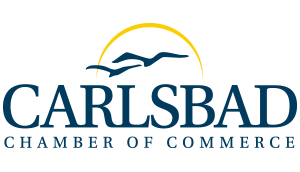 Lou Storrow
Lou Storrow
Attorney
Storrow Law, APC
The federal government has enacted emergency legislation in response to the widespread havoc that COVID-19 has caused in American life. One measure affecting nearly all employers is the Families First Coronavirus Response Act (FFCRA). Its eight divisions include a new Paid Sick Leave law and changes in FMLA leave that will be in effect for the rest of this year, along with amendments to the federal budget, changes in health and nutrition regulations and tax credits to pay for some of the new mandates.
The law affects virtually all employers in the US under 500 employees, mandating paid sick leave nationally for the first time and expanding job protection under the Family Medical Leave Act. It will benefit employees who can’t work either because they or a family member has COVID-19, or have symptoms and seek treatment, or are quarantined, or if their children are home due to canceled school or child care.
This is a summary of FFCRA’s impact, which may change over time as Congress and the States take additional action and as federal agencies add regulations to interpret the new law and give it effect.
EMERGENCY PAID SICK LEAVE ACT
Starting on April 2, 2020 and ending on December 31, 2020, paid sick leave of up to 80 hours (for part timers, average hours over two weeks) must be made available to employees who cannot work because they are subject to a COVID-19 quarantine or isolation order by a government agency, are advised by a health care provider to self-quarantine or have symptoms of COVID-19 and are seeking diagnosis or treatment, have to care for another person under one of the above, have to care for their minor child whose school is closed or childcare is unavailable due to COVID-19, or under another similar condition recognized by the US Dept. of Health & Human Services.
Employers of health care providers and emergency responders may elect to exclude those employees from these protections. Pay must be at the employee’s usual rate (averaged for employees whose rates vary) but need not exceed $511 per day when the employee is quarantined or ill. For those employees caring for others, the required pay rate is two-thirds of regular pay and need not exceed $200 per day. Once the employee has begun time off, the employer can require reasonable notice from the employee to continue getting benefits.
EXTENSION OF FAMILY MEDICAL LEAVE ACT
The FMLA used to be limited to employers of 50 or more. But as of April 2, 2020 and until December 31, 2020, employers of anywhere from one to 500 employees must provide COVID-19 related leaves of absence to employees whose children have to be home because of COVID-19. Some employers may be excluded because they don’t engage in “interstate commerce” but that’s a very limited exception in todays interconnected world.
Employers of fewer than 50 can ask the Secretary of Labor for a waiver if compliance would jeopardize the viability of the ongoing business. Look to the US Department of Labor website for details and regulations, including how to apply for waivers.
As with paid sick leave, employers of health care providers and emergency responders can exclude those employees from coverage.
Under the amended FMLA, an employee has to work for you only 30 calendar days to be covered for COVID-19 absences. They are entitled to leave with a right to reinstatement if they can’t work because their child under 18 has had school or daycare canceled or a caregiver is unavailable, due to emergency restrictions. Pay for the first ten working days is unpaid under FMLA but covered by the Sick Leave portion of the law (discussed above), after which the employer must pay at least 2/3 of the employee’s regular rate for their usual scheduled hours, up to a maximum of $200 per day and a total outlay per employee of $10,000.
Employees returning from COVID leave have the usual right to job reinstatement under FMLA, except if the employer has fewer than 25 employees and meets these requirements:
- The job is gone because of the economic or other conditions brought on by the emergency; and
- The employer makes reasonable efforts to restore the employee to an equivalent position, and if that’s not possible, makes an effort to contact the employee if a position becomes available within a year after the earlier of 1) the date the emergency is over, or 2) the 12 weeks of leave is over.
Employers should be careful not to take action against employees who demand their rights under the law, or who complain about an employer’s noncompliance. The US Department of Labor will have enforcement power. Stay informed as new regulations or state rules may add to these requirements.
Lou Storrow is a labor and employment lawyer in Carlsbad, CA. This article is for information purposes and should not be relied upon as legal advice.
